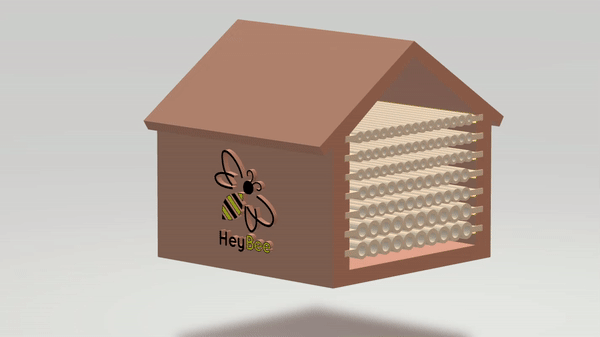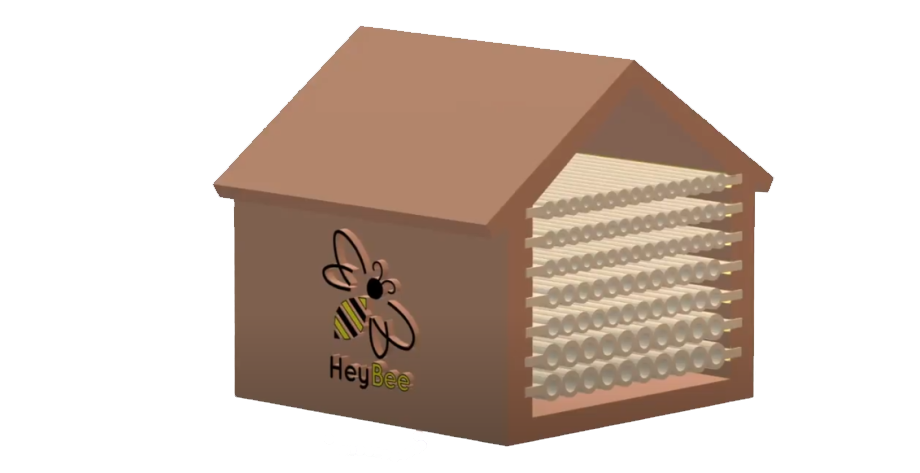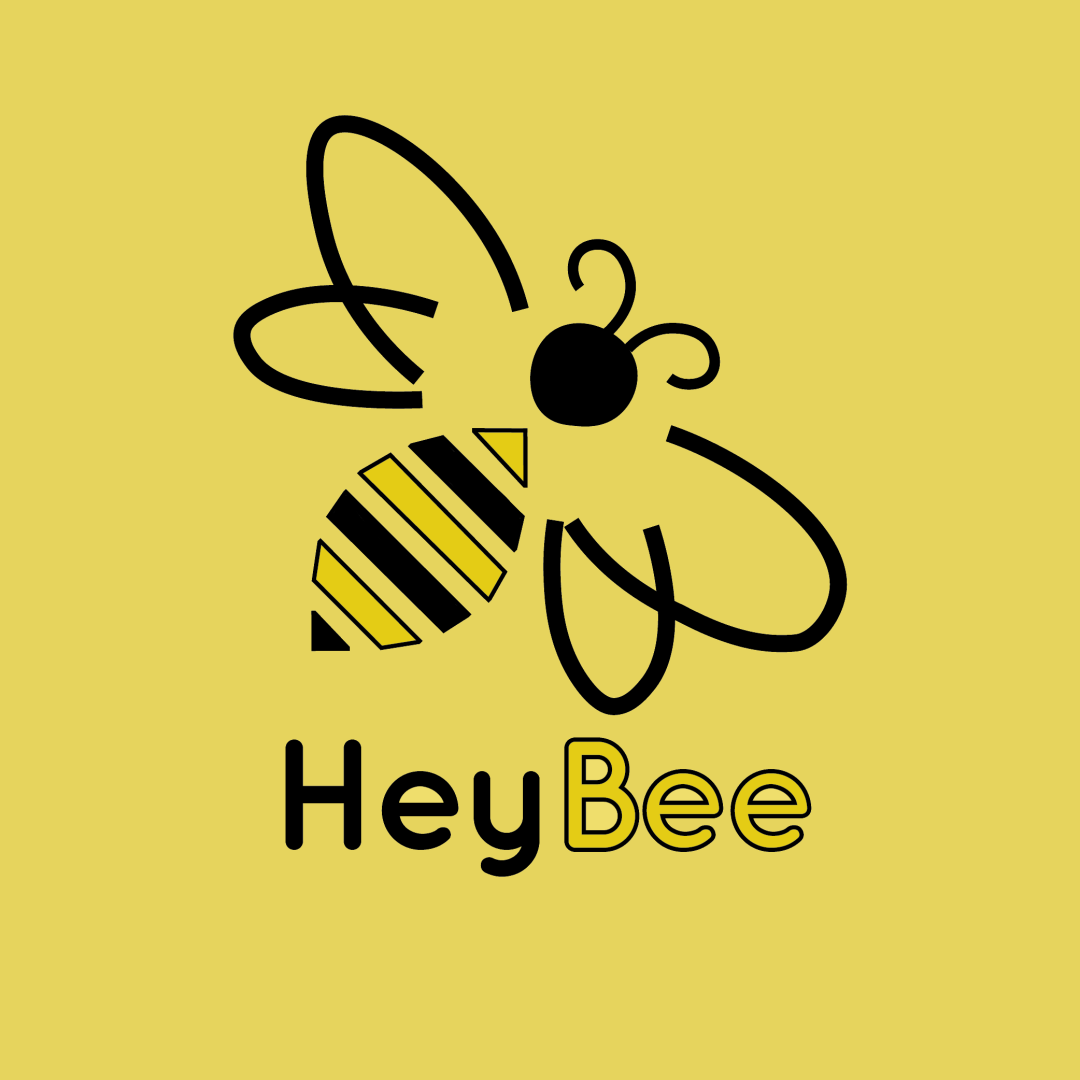HeyBee
Basic information
Project Title
Full project title
Category
Project Description
Over the past few years bee population has been drastically declining as people have started to care less. At HeyBee, we create 3D printed bee homes can be set up anywhere. We also offer companies with personalized bee homes with their logo. This gives them the opportunity to make a positive impact on the environment. Our vision is that every garden, every balcony, and every rooftop will have a bee home, connecting people back to nature. Together we can change the world, one bee home at a time.
Geographical Scope
Project Region
Urban or rural issues
Physical or other transformations
EU Programme or fund
Which funds
Description of the project
Summary
75% of our most important food crops depend on bee pollination. Every third bite of your food is related to bees. Unfortunately, the number of these important insects has been decreasing to a critically low number. One reason for this is that there are fewer wild plants for the bees to thrive in. HeyBee is going to change that. With cities growing, many people have a spare space, like a balcony, roof, or garden. At HeyBee, we provide you with 3D printed bee homes that you can easily print out at a public 3D printer near you. Additionally, you receive a step-by-step plan which guides you through the whole process from getting your first bee home, to which flowers to plant and how to take care of your friends. We will also partner with companies and provide them with personalized bee homes that will carry their logo. This gives businesses the opportunity to support a sustainable project that is making a positive impact on the environment while advertising their brand. Our vision is that every garden, every balcony, and every rooftop will have a bee home, giving bees a nice place to live and connecting people back to nature. Together we can change the world, one bee home at a time.
Key objectives for sustainability
Our whole environmental system depends on pollinators. The most important pollinators are bees, especially wild bees are almost 4 times more effective pollinators than honeybees. Unfortunately, due to several factors like overuse of pesticides and extensive soil sealing with growing cities and loss of habitat due to human activity, the number of these crucial insects has been drastically decreasing.
With HeyBee we will provide 3D-printed bee homes that are specifically designed to be set up in private as well as in public places all around the city. That way, bees will return back to urban areas and make them greener and nicer to live in. As wildbees are not dangerous to humans and only have a positive impact, this is the perfect solution to protect them. HeyBee homes are a sustainable way to help the most important insects on our planet if we want to keep producing around 75% of the crops available currently.
In addition, the bee homes are printed out of sustainable recycled plastic or an alternative is PLA which is made out of cornstarch. Both ways our product will not pollute further and will be helping recycle current plastics out there and turn them into something useful for all of humanity.
Key objectives for aesthetics and quality
What makes HeyBee stand out is that through 3D printing the bee homes can have unique shapes and be adapted to the requirements of the individual customer and the place where they will be set up. This means that the 3D bee homes can be adapted to the style of the city which they are placed in, either modern to fit new areas of cities, or classically looking in order to fit older parts of cities such as ones in Stockholm or Paris. In cities, signs can also be setup around the beehomes with information and pictures of local bee species aiming to increase people's interest in the bees and also show them how important they are. This means that HeyBee is the perfect solution for an aesthetically pleasing way to help the wild bees and give them a safe place to live. As the homes will be printed with recyclable materials, the disposal will also be very easy.
Key objectives for inclusion
With the cost of 3D-printing dropping by the day, the production costs of the bee homes will also decrease as will their price. With your HeyBee-home, you will also receive a manual that will give you a step-by-step plan on how to get your first bees and how to properly take care of them. As wild bees don’t sting, observing them is safe, also for children.
As bee homes will also be set up in public places in urban areas, they will offer the perfect opportunity to connect people back to nature and inform them about the importance of these little creatures. Furthermore, local “bee-care-taking groups” can be formed, driving the engagement of the citizens and building connections between people and the environment.
Another thing which would help develop the interest in the bees are the signs which could be setup next to the beehomes, these would not only increase the interest of citizens in nature and the bees but would also highlight how important the bees are for all humans equally.
Physical or other transformations
Innovative character
HeyBee is creating a product, that will give our most important plant pollinators, our native bees, a home. Using 3D printing allows us to make the Bee-Homes stand out and have the perfect shape for every customer and place. As wild bees are comparatively easy to take care of, they are perfect to give citizens, especially children, the opportunity to interact with and learn about nature. Thanks to this, HeyBee is perfect to connect people back to the nature and more specifically to the bees as they are usually neglected and made less important. Thanks to signs around the bee homes, citizens could also learn about the bees more in depth and see how important they are for all of our food thanks to statistics.



